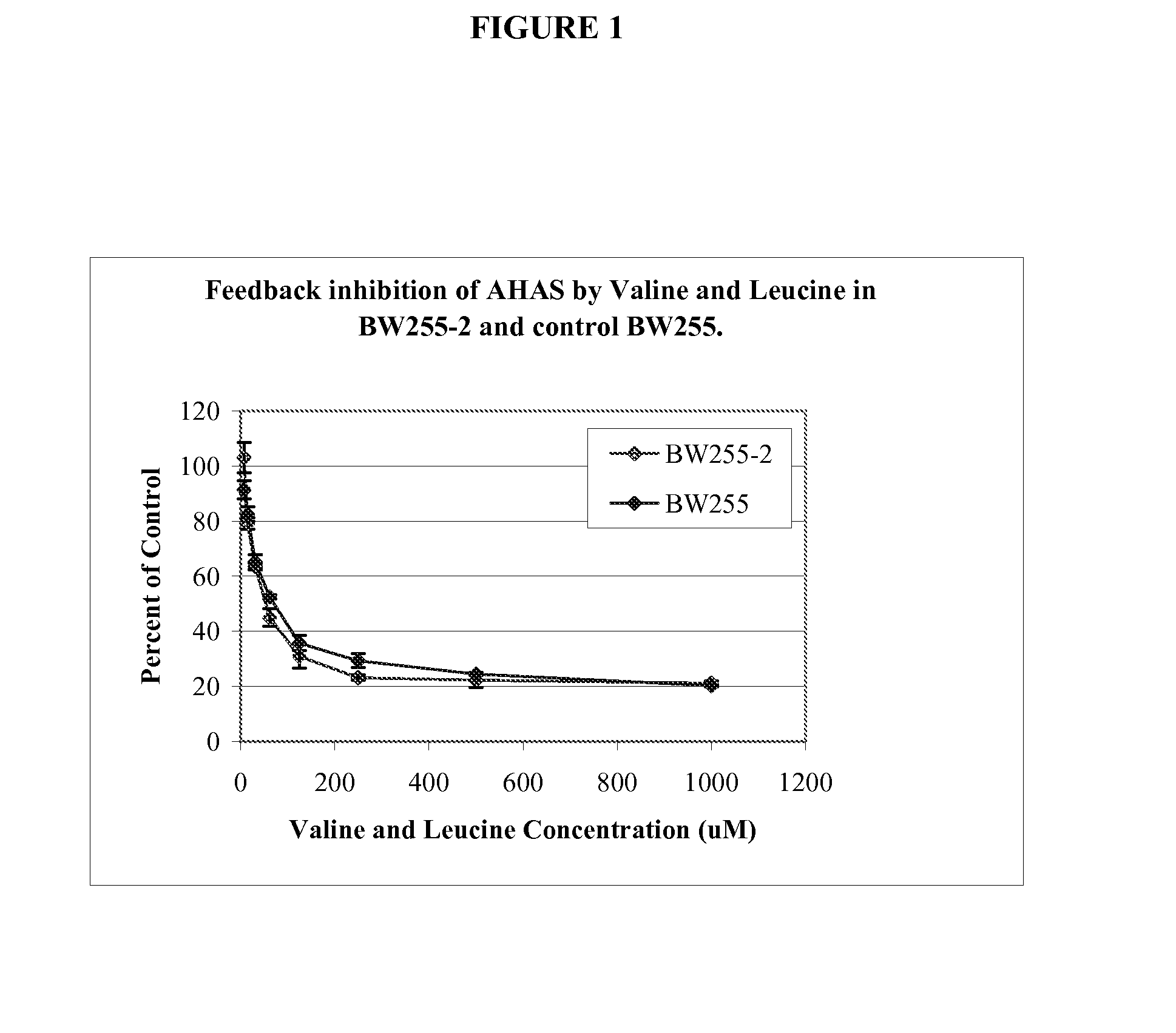Methods for making and using wheat plants with increased grain protein content
- Summary
- Abstract
- Description
- Claims
- Application Information
AI Technical Summary
Benefits of technology
Problems solved by technology
Method used
Image
Examples
example 1
Wheat Lines with Increased Grain Protein Content
[0135]Wheat lines were produced using standard mutagenesis and conventional plant breeding methods. The objective of the mutagenesis was to develop wheat lines with tolerance to imidazolinones herbicides. The mutation responsible for imidazolinone tolerance in these wheat lines is a single nucleotide change of guanine to adenine, which results in a codon change from AGC to AAC and a single amino acid substitution of serine to asparagine in the AHASL (acetohydroxyacid synthase large subunit) protein, designated as TaAHASL1A S653N. The AHAS enzyme catalyzes the first step in the biosynthesis of branched-chain amino acids, valine, leucine and isoleucine (Stidham and Singh (1991) “Imidazolinone-Acetohydroxyacid Synthase Interactions,” In: The Imidazolinone Herbicides, Ch. 6, Shaner, D., and O'Connor, S., eds.; CRC Press, Boca Raton, Fla., U.S.A., pp. 71-90) and is under feedback regulation by these amino acids in plants. The single point m...
example 2
Herbicide-Resistant Wheat AHASL Proteins
[0141]The present invention discloses the use of the polynucleotides encoding wheat AHASL1A S653N polypeptides. Plants comprising herbicide-resistant AHASL polypeptides have been previously identified, and a number of conserved regions of AHASL polypeptides that are the sites of amino acid substitutions that confer herbicide resistance have been described. See, Devine and Eberlein (1997) “Physiological, biochemical and molecular aspects of herbicide resistance based on altered target sites”. In: Herbicide Activity: Toxicology, Biochemistry and Molecular Biology, Roe et al. (eds.), pp. 159-185, IOS Press, Amsterdam; and Devine and Shukla, (2000) Crop Protection 19:881-889.
[0142]Using the wheat AHASL1A S653N sequences of the invention and methods known to those of ordinary skill in art, one can produce additional polynucleotides encoding herbicide-resistant AHASL polypeptides having the S653N substitution and one, two, three, or more additional ...
example 3
Performance of High Protein Wheat Lines in Arizona and California Field Trials
[0143]Spring wheat lines (Triticum aestivum) comprising the AHASL1A S653(At)N mutation and their isogenic, non-mutant, parental lines were grown over the winter (2005-2006) in three locations in the Northern Hemisphere (California and Arizona, USA). The grain protein content of each of the lines was measured to determine whether the AHASL1A S653N mutant wheat lines displayed increased grain grown relative to their parental lines in environments that are outside of their adaptation zones and under sub-optimal photoperiod conditions (i.e., shorter days).
Entries and Locations
[0144]Homozygous AHASL1A (S653N) mutants in two genetically distinct genotypes, Kirchauff-K42 (an Australian spring wheat line, also referred to herein as “K42”) and BW238-3 (a North American spring wheat line), along with their isogenic, non-mutant, parental lines (Kirchauff and BW238 respectively) were grown in adjacent large plots (sin...
PUM
| Property | Measurement | Unit |
|---|---|---|
| Capacitance | aaaaa | aaaaa |
| Temperature | aaaaa | aaaaa |
| Volume | aaaaa | aaaaa |
Abstract
Description
Claims
Application Information
 Login to View More
Login to View More - R&D
- Intellectual Property
- Life Sciences
- Materials
- Tech Scout
- Unparalleled Data Quality
- Higher Quality Content
- 60% Fewer Hallucinations
Browse by: Latest US Patents, China's latest patents, Technical Efficacy Thesaurus, Application Domain, Technology Topic, Popular Technical Reports.
© 2025 PatSnap. All rights reserved.Legal|Privacy policy|Modern Slavery Act Transparency Statement|Sitemap|About US| Contact US: help@patsnap.com

